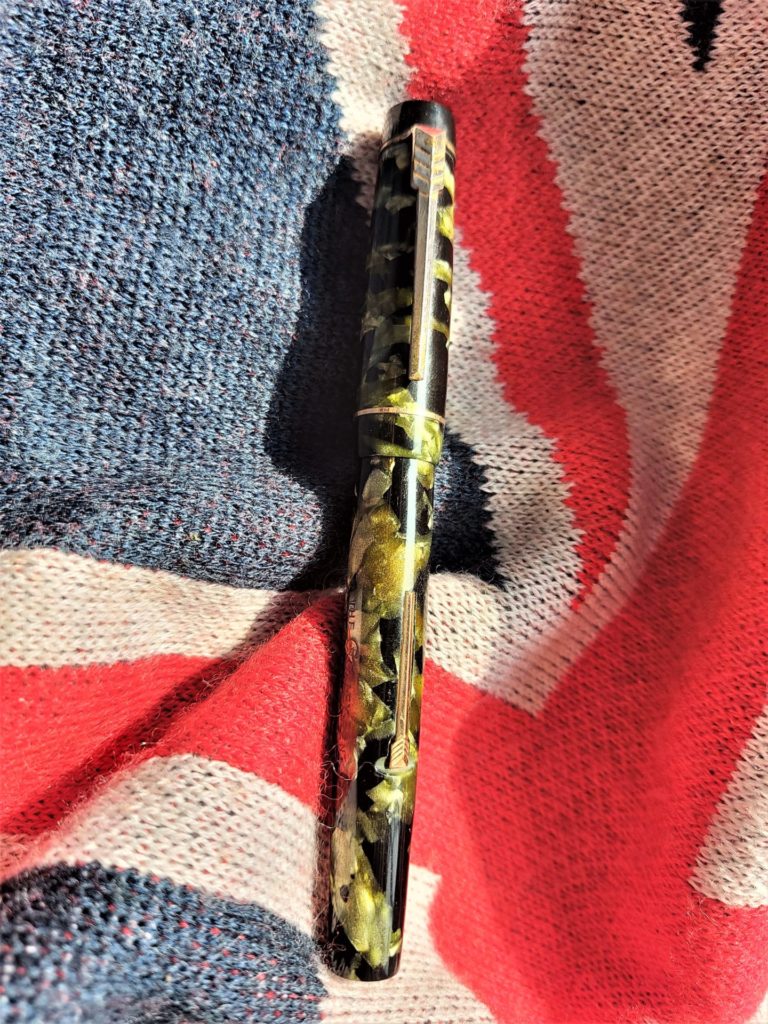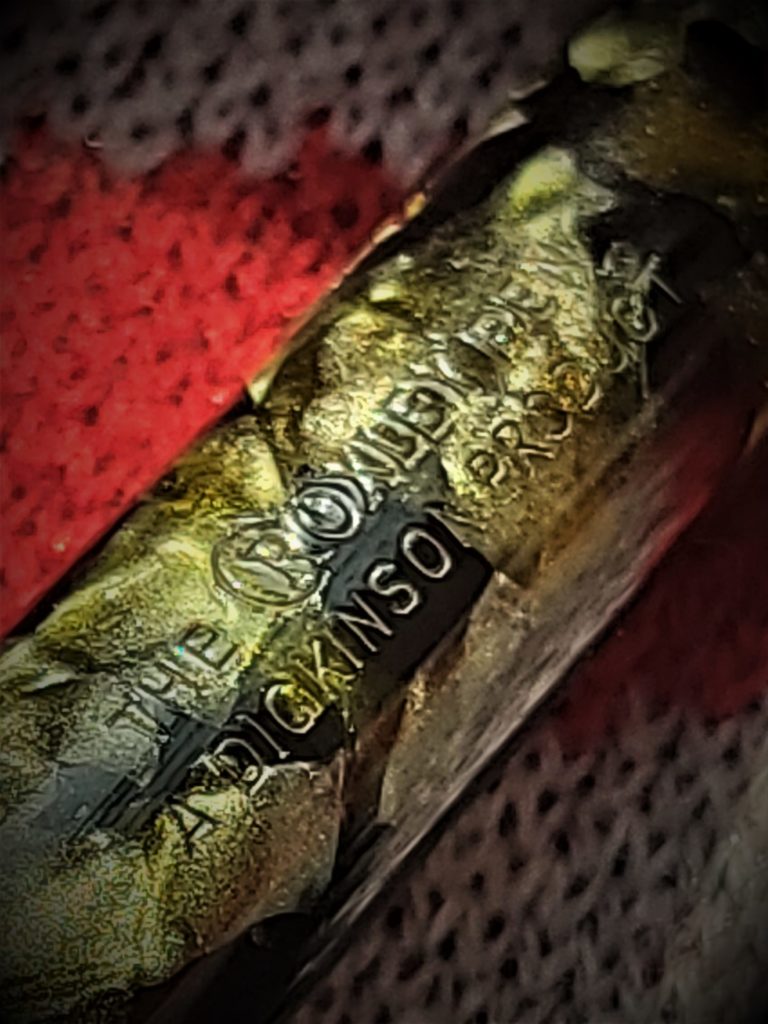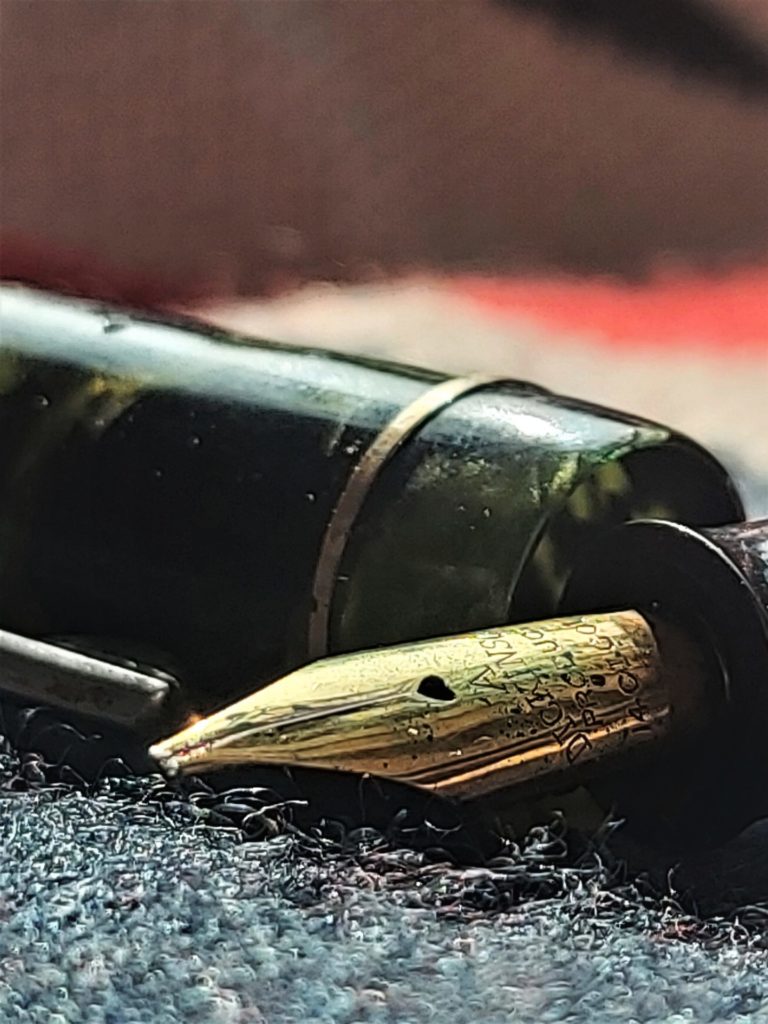
Croxley Pens from Dickinson – as pucca as a sahib can be, stiff upper lip, understated elegance et all.
British fountainpens do not, in general, stir the kind of excitement in stylophiles that German, Italian or even Japanese pens do. A pity, actually, considering the glorious legacy that British pens carry and the extremely top-notch craftsmanship that some of them exhibit.
It will be pertinent to note here that Birmingham was, for many long years in the 19th century, the centre of the world’s pen trade. Admittedly, those were the days of the dip pens and Birmingham specialised in the manufacture of steel nibs that were attached to such dip pens, none the less.

The two quintessentially British brands that connoisseurs relate to, till date, are Onoto and Conway Stewart, both of which had started their journeys in the fateful year 1905. Onoto, an offshoot of the then well established De La Rue group, by creating the first ever self-filling fountain pen, while entrepreneurs Frank Jarvis and Tommy Garner staked their all to start their maiden venture. The roaring twenties and the period between the two great wars, often referred to as the “golden age” was the time when the two would rule the popular imagination, virtually owning all that they surveyed.

Mabie Todd & Bard which had its first patent in 1878 had crossed the ocean to open its London office in 1884. However, manufacture of pens began only in 1909 and by 1915, the UK side of the business had become so dominant that it bought out the original New York firm. The elegant Swan, is thus, perhaps more British than it is American.
Burnham that followed, had a golden run between the mid 1920’s and the mid 1960’s, were known for their quality and their stunning, colourful dispositions are naturally, highly sought after by collectors.

But the pen that I have today is rarer still, though perhaps nowhere near the big names in terms of identity, but still no pushover by any stretches of the imagination. As a matter of fact, it was, as my friends in the know point out, one of the most widely available fountain pens available in the UK in the 1950’s or thereabouts, though for reasons not immediately known, somewhat sadly underrated. Yes, we are talking about the “Croxley Pen, a Dickinson Product, Made in Great Britain” imprinted on its glossy, green thick celluloid barrel. That it is a Dickinson product, is also proudly etched on the 14 ct gold nib, which, in my pen, is a Broad tipped one with a flex that is just mesmerizingly alluring, heightened by the fact that the tines meet in a heart shaped breather hole. The thin golden ring at the bottom of the cap is also typically British in its under stated elegance.

The pen is lever filler, the unique arrow clip matching the lever in a partnership reminiscent of another British gift to mankind, cricket. What must also be put on record is the very robust build of the pen, the attention to detailing and the overall quality, which does not leave much to be desired. That is precisely why I tend to believe those who say that Croxley pens were made inhouse by Dickinson in the factory they had set up in Croxley itself, as opposed to others who claim that the pens were outsourced from either De La Rue or Conway Steward.
The Croxley fountain pen is an interesting addition to any serious collector’s hoard, as it represents an important bend in the flow of the history of British fountain pens. Several large stationery companies were known to own fountainpen brands in those days of yore and despite such pen making endeavours being secondary to these brands, the pens actually made were known to be of excellent quality, often vying for the same respect that was accorded to primary producers. John Dickinson which was one of the largest paper manufacturers of the land (its paper mill was established in Croxley, a few miles outside London, in 1830) too, had gone into a number of related areas, getting into fountain pen production in the 1930’s.

The pen, as I have already alluded, is extremely well made and all the parts fit in without even a hint of a murmur. The clip and the side lever mesh-in, akin to the British obsession of Fish and Chips and the marbled green celluloid is of very high quality, considering the simple fact that even after so many decades, having made the transition from the cold climes of Croxley in England to sultry heat of Calcutta in India, it has still retained its sheen, sans any discolouration even. The nib has a springy flex which is a sheer delight and overall, the Croxley Dickinson pen, though apparently targeted to the mass market, is one that is extremely well made, capable of holding its own in the company of peers who are far more expensive.

Croxley Dickinson pens, the experts tell me, were made for a relatively small period of time and offered a very limited product range. The colours that were available were also not wide enough, with black being the most predominantly available option though some marbled options and a few desk pens were also on offer.


Croxley pens are high quality pens but their roots are in Curzon Lang (Summit), rather than De La Rue or Conway Stewart. It’s roots are in the Summit S125, indeed, the first Croxley pens had ball clips and a straight filler lever. In most respects they were indistinguishable from the S125 and the pens they made for National Security and Stephens.
According to the great guru, Steve Hull, Croxley bought surplus equipment from Langs when they introduced injection molded plastic machinery for a new range of pens, and set up a manufacturing facility at their Kirkby plastics factory (Lang’s were also based in Liverpool), in the spring of 1947.
I have a boxed pen with a receipt dated January 1947. Although I cannot guarantee it is the same pen, it suggests that the original arrow clip and lever pens were manufactured by Lang’s.
thank you so much for your invaluable input